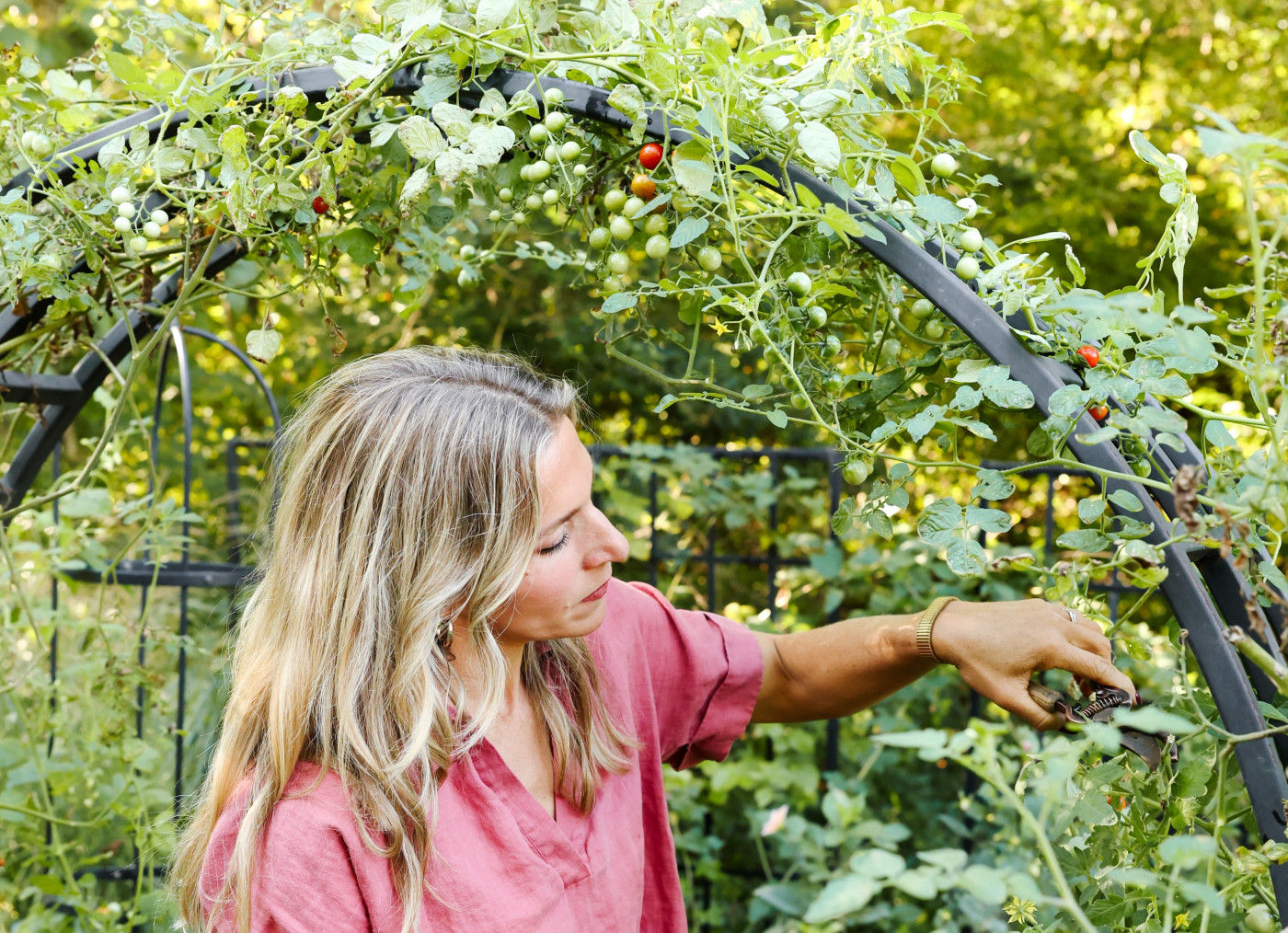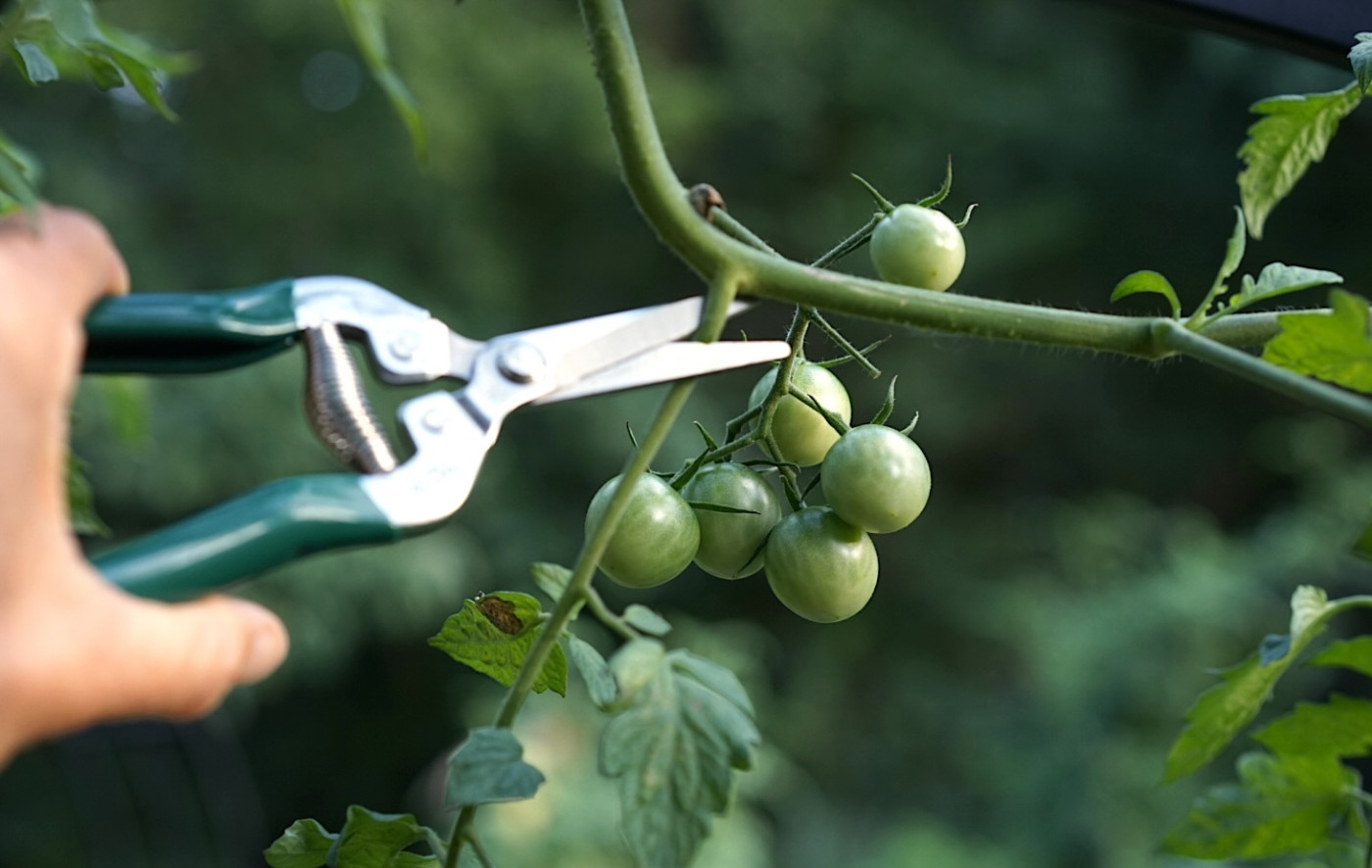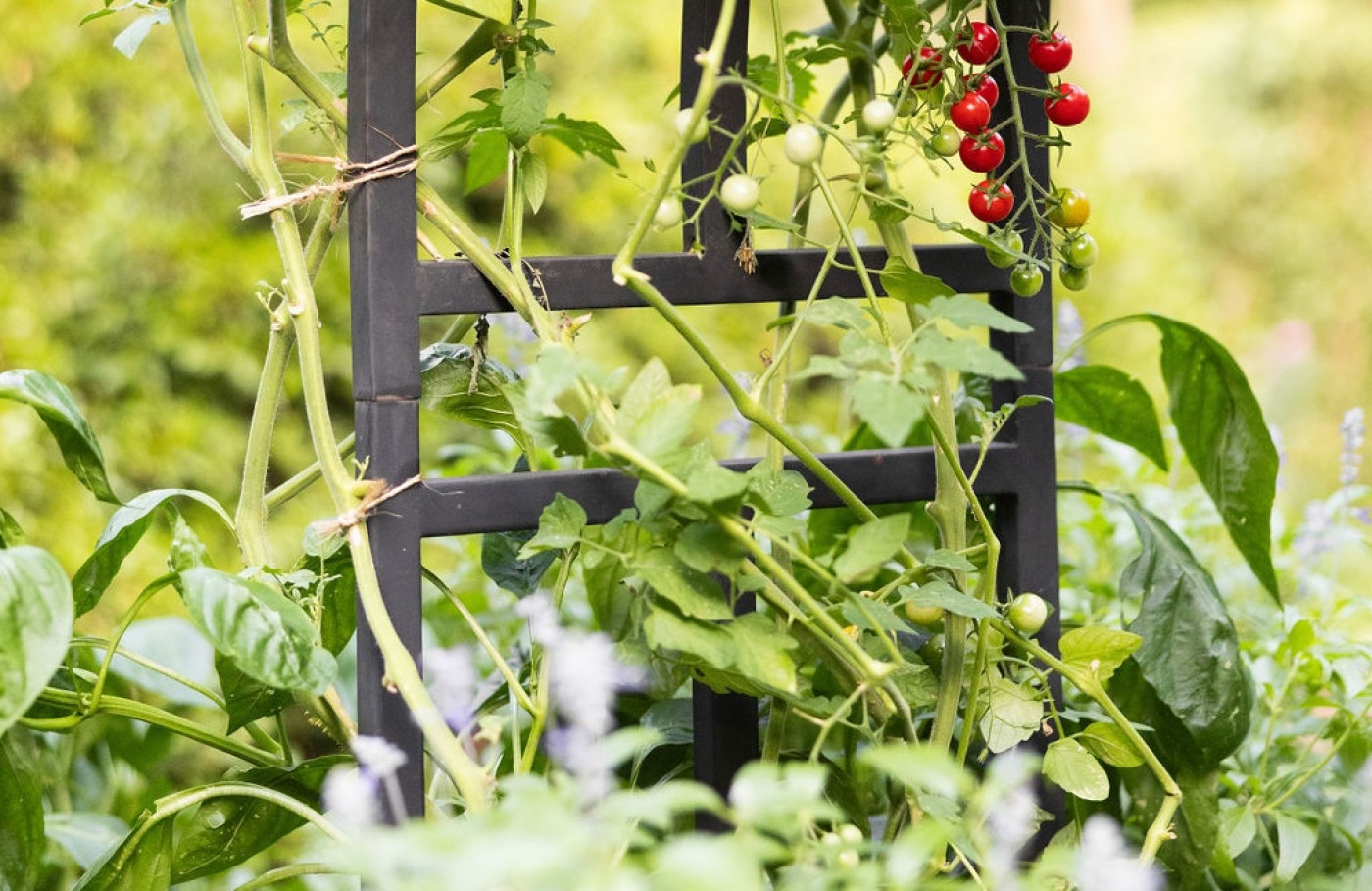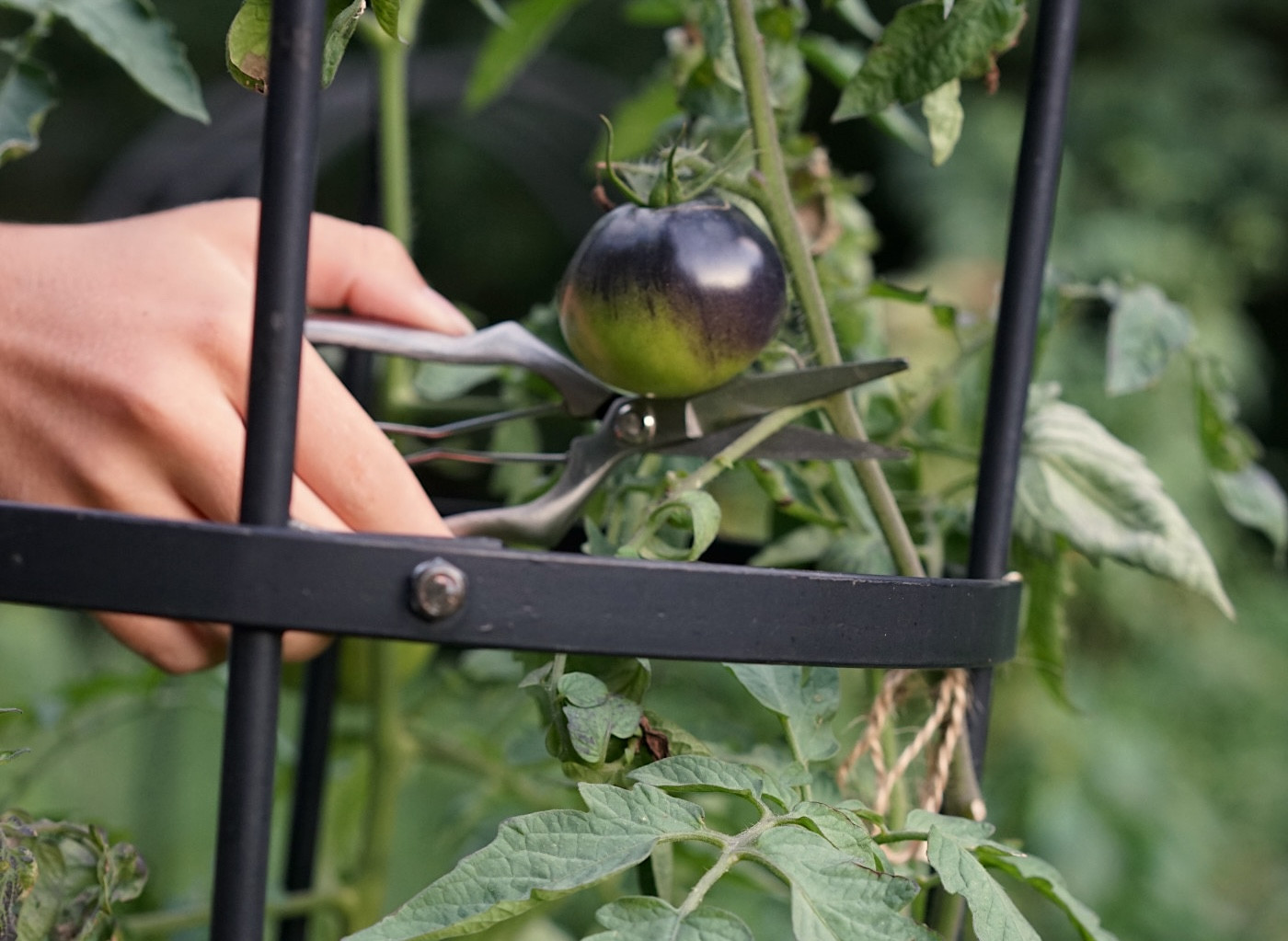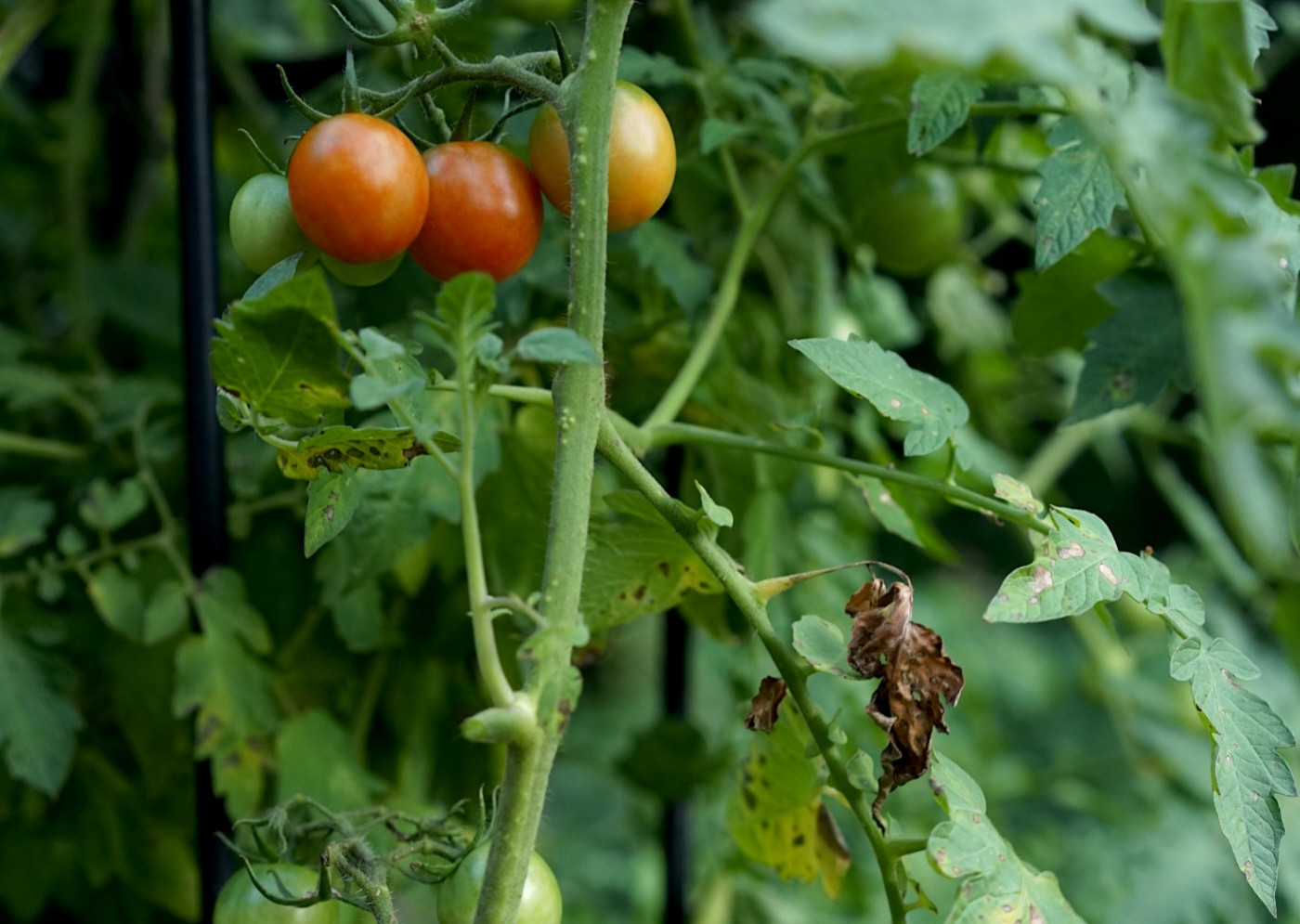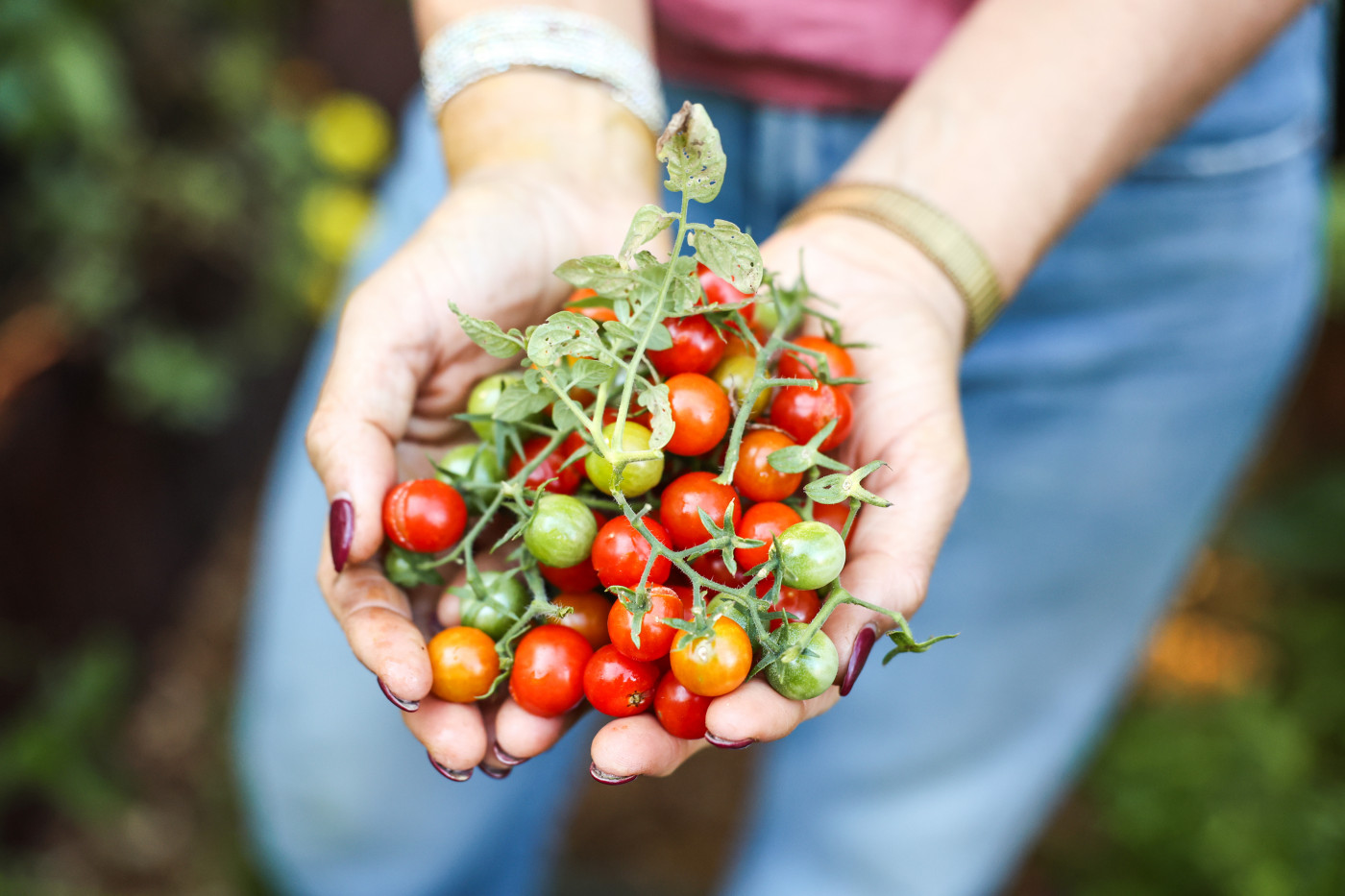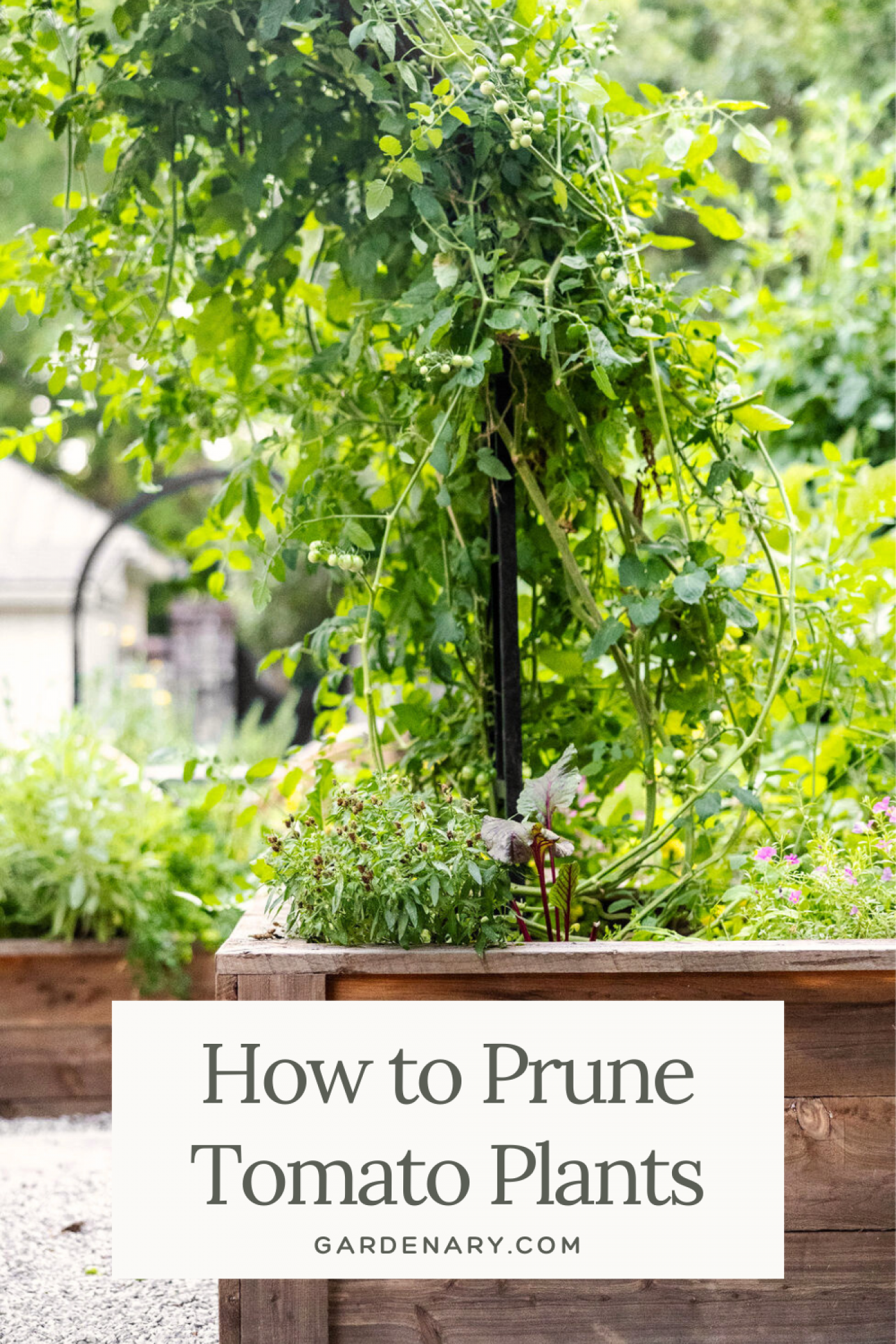How to Prune Tomatoes to Maximize Your Fruit Production
The first couple years I grew tomatoes, I'd get loads of leaves and just a few tomatoes. I tried fertilizing more. I tried watering more. I even tried wrapping individual fruits in organza bags to protect them from squirrels. It wasn't until I switched up my pruning habits that I finally got good production.
Note that these pruning techniques apply to indeterminate tomatoes (the vining kind). These plants will grow and grow until frost comes along to kill them, so pruning is our best way to direct the plants' energy and control their growth. If you're growing determinate plants (bush kind), you really don't need to prune much at all. Your plants are basically self-pruning.
Alright, here's what to do (and what not to do) to get more tomatoes from your indeterminate tomato plants.
At a Glance
- Pruning indeterminate tomato plants is key to maximizing your fruit production.
- For the first couple of weeks after planting a tomato plant, remove extra stems and side shoots; after that, do a weekly prune of extra leaves, starting from the bottom of the plant and working your way up.
- Keeping the suckers and topping off your plants at the end of the season are two strategies to ensure you get as many tomatoes from each plant as possible.


Start Your Garden the Easy Way
Get growing with 10 foolproof seed varieties, a 120-page gardening guide, planting plans, and step-by-step video lessons—all designed to help you succeed. The Easy Garden Kit makes it simple, fun, and affordable to bring fresh food and flowers to your backyard.
Tomato Pruning Mistakes
Letting Your Plant Grow Multiple Main Stems
During the first few weeks of growing a vining tomato plant in your garden, pay attention to the base of the plant. We want each plant to focus on forming just one strong main stem.
Why is it bad to let your plant grow multiple main stems?
The base of your tomato plant is about to be responsible for carrying a pretty heavy burden—all that delicious fruit! If you let a plant produce several side stems before it flowers, that main stem will never be as strong as it should be. The strongest tomato plants have one nice thick main stem that can support and feed tons of growth and, most importantly, fruit.
What to do instead
Every week for the first 2 to 3 weeks after planting a tomato in your garden, come out with your pruners and remove any extra stems and side shoots that start growing. Focus on the main stem.
This is most important while your plant is getting established. Once your plant forms the first flower clusters, you can let it start to branch out.
Now, what if your plant's been in the garden for a month and has more stems at the base than you can count? I recommend pruning any stems that don't have flowers or fruit forming. You can keep the stems that are already fruiting.
Gardenary's Warm Season Garden Planner
This beautifully designed planner takes the guesswork out of gardening and helps you stay organized, inspired, and on track during the warmer months.
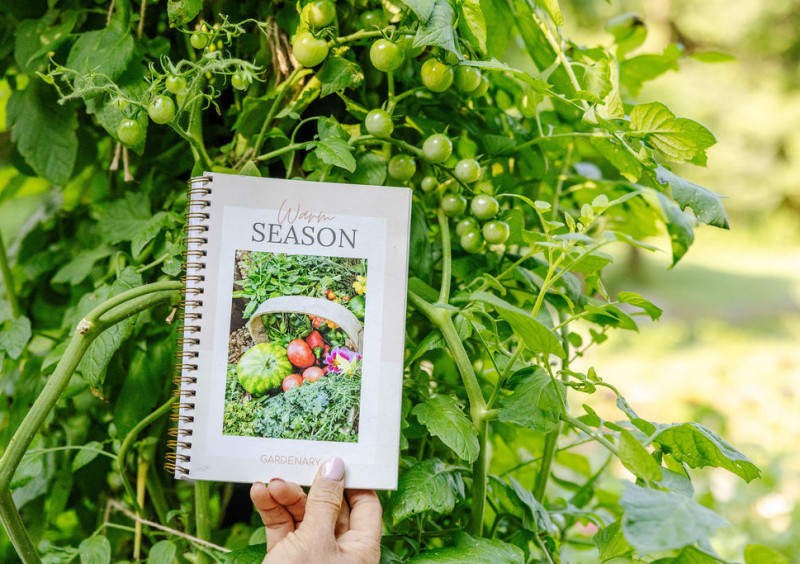
Keeping Too Many Tomato Leaves
We need a canopy of leaves to absorb sunlight and shelter the fruit as it grows. But pruning any leaves beyond what's necessary for plant survival can actually help direct the plant's energy toward producing way more tomatoes for you.
Why is it bad to keep too many leaves?
Each leaf the plant has to maintain drains it of energy. We want that energy to go toward fruiting, not supporting leaves, so we'll focus on pruning leafy stems that aren't directly involved in fruit production.
What to do instead
Once a week, prune about a third of the plant's leaves, starting at the bottom of the plant and working your way up to the top. You can certainly prune less than a third of the leaves, but never do more—that's the golden rule of pruning a tomato (and any other plant).
Start at the bottom so you can focus on removing those lower leaves, which tend to be older and are probably shaded by neighboring plants anyway. Removing them is also a good way to ensure your plants have good air circulation if you're packing in the plants like we do.
To prune leaves, look for perpendicular stems coming from the main stem. These stems will never form fruit. They only produce leaves. Think of it this way: They've done their job (photosynthesis), and now they can go. We no longer need these leaves to help the plant create its own food and grow to the next level.
Now, your plant can focus all its energy toward the top of the plant and create more fruit clusters.
Pruning the Tomato Suckers
I know, I know, so many of you have been told to prune the suckers. Hear me (and my unpopular opinion) out.
Why is it bad to prune the suckers?
It's not bad per se, but if your goal is to get as many tomatoes as possible from your plants, then pruning the suckers is not the way to go.
A sucker is basically a tomato vine's attempt to recreate itself. If you pulled off this new vine and planted it, you'd have a brand new tomato plant. That means each and every sucker is capable of producing fruit.
Suckers do pull energy from the plant. They have their own leaves, stems, and fruit to support, after all. That's why you'll get bigger fruit if you prune them. If you want the biggest tomatoes possible, prune all of the suckers so that every ounce of the plant's energy can go toward making each fruit huge.
I prefer more tomatoes I can use in my kitchen, not prize-winning tomatoes I could take to the fair. To me, more is more. Keeping the suckers maximizes the amount of tomatoes I can toss into my harvest basket over an entire growing season.
What to do instead
Just because you've decided to keep the suckers doesn't mean you don't need to prune your plants. To find the suckers, look for the offshoot growing at a 45° angle, right in the middle of the main stem and a perpendicular branch. Then, prune that perpendicular branch instead of the sucker. Boom! You've freed the plant of some stems that were never going to produce fruit, and you've kept stems that will turn into more vines and more fruit.
I typically keep all suckers that are 2 feet or more above the soil line.
You get to decide if you're going to take the suckers or leave them. I dare you to try it my way this season!
Keeping Yellow or Pest-Affected Leaves on the Plant
As with any other plant in your garden, you want to remove leaves that don't look healthy ASAP.
Why is it bad to keep damaged leaves?
Keeping damaged leaves on the plant causes the plant to work harder to support them. Those leaves are also likely still harboring the pest or disease that harmed them in the first place. Removing anything that's visibly damaged goes a long way toward keeping your plants healthy so they can focus on doing their thing and growing lots of fruit for you.
What to do instead
Look for leaves that are discolored or that have spots or holes, starting at the bottom of the plant and working your way up. Use your pruners to cut right at the base of the affected leaf. Damaged plant parts should be tossed into the trash instead of your compost pile.
Remember the golden rule of trimming tomato plants? If you find yourself needing to remove more than a third of the plant's leaves, your poor tomato plant is most likely diseased or suffering intense pest pressure. The best thing to do at this point is to remove the plant and start fresh with something that hasn't been stressed out by pests or disease.
Speaking of disease, make sure you're wiping down your pruners with some rubbing alcohol before each use to avoid spreading anything nasty from plant to plant.
Shop Gardenary's Tomato and Pepper Seed Collection
Our Tomato & Pepper Collection is perfect for gardeners who love bold flavors and beautiful variety. This set includes 6 tomato varieties—from juicy slicers to bite-sized cherries—and 5 pepper varieties ranging from sweet and crisp to delightfully spicy.
Letting Your Vines Keep Growing at the End of the Season
The last mistake you might be making with your tomatoes is not planning ahead before the arrival of frost. Instead of letting our plants continue doing their own thing, we want to encourage them to hurry up and finishing maturing the last fruits on the plant. We do this by topping them off.
Why is it bad to let the vines keep growing?
The more energy the plant puts toward growing more leaves, the less it puts toward forming and ripening fruit. When time is running out, we want to force our plants to put all their energy toward finishing the fruit already growing on the plant.
What to do instead
You can begin to pinch off suckers about 6 to 8 weeks before your first frost. Those suckers won't have time to develop and produce, so we don't want them to pull any energy from the plant.
Then, when you're about a month out from your first expected frost, it's time to top off your tomatoes. All you have to do is take your pruners and cut off the tip of each vine. I like to find the last fruit truss and cut just above.
This tells the plant to stop growing bigger. Remember, indeterminate vines want to keep on growing forever. It's our job to send them the message that they need to finish what they started instead.
If you plan ahead, then the majority of your fruits will ripen before frost arrives. Go ahead and harvest all your fruit before the freeze. Fruits that are fully formed will continue to ripen indoors.
Enjoy the Largest Tomato Harvests Ever!
Avoid these five mistakes, and you'll get way more tomatoes from your plants than you ever have before.
Just remember: create a strong base for your plant with just one main stem, prune the lower leaves every week, keep the suckers, and top off your plants about a month before your first frost. That's how you take your tomato growing to the next level!
For more tomato growing tips, check out our complete guide.

